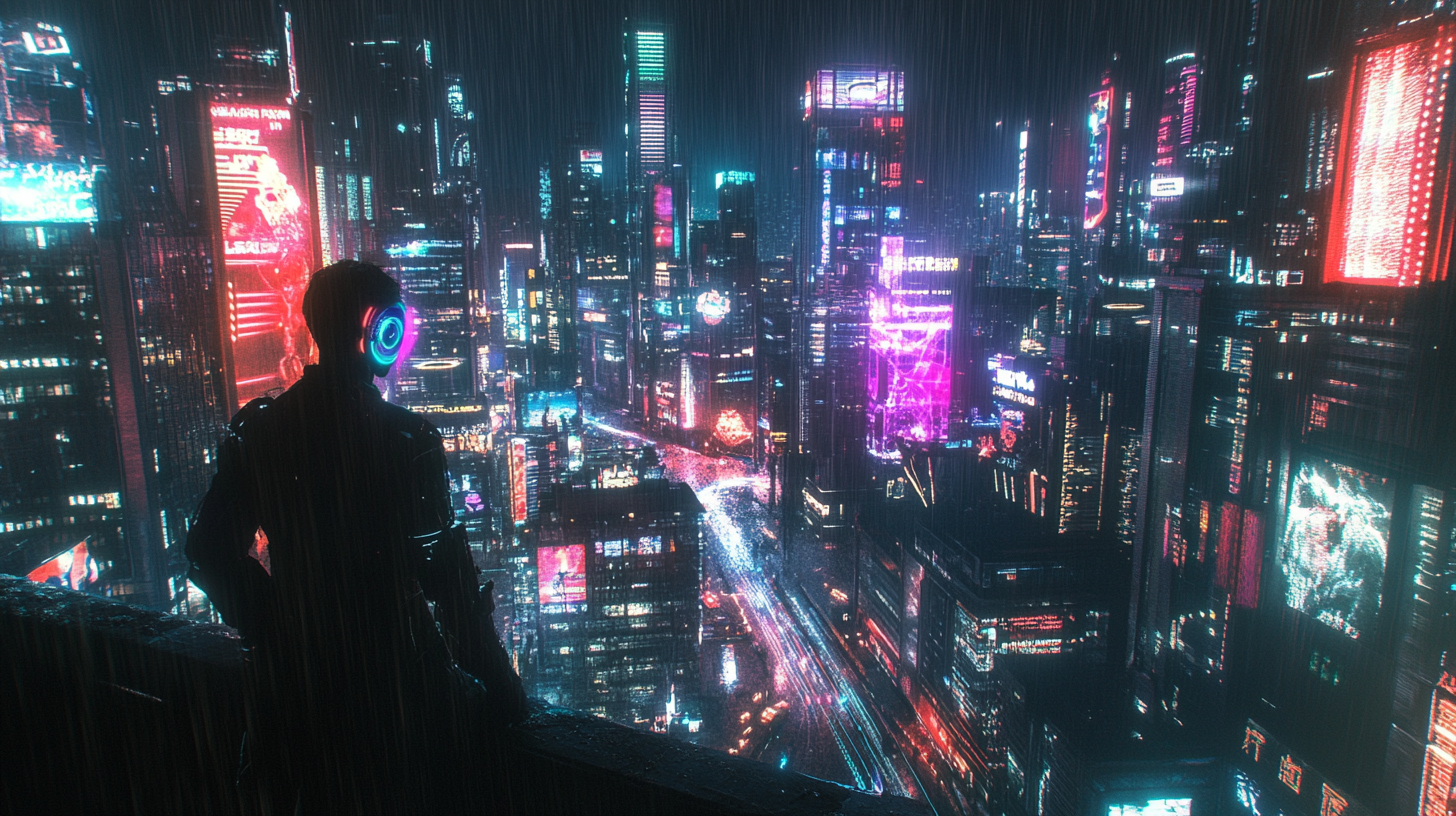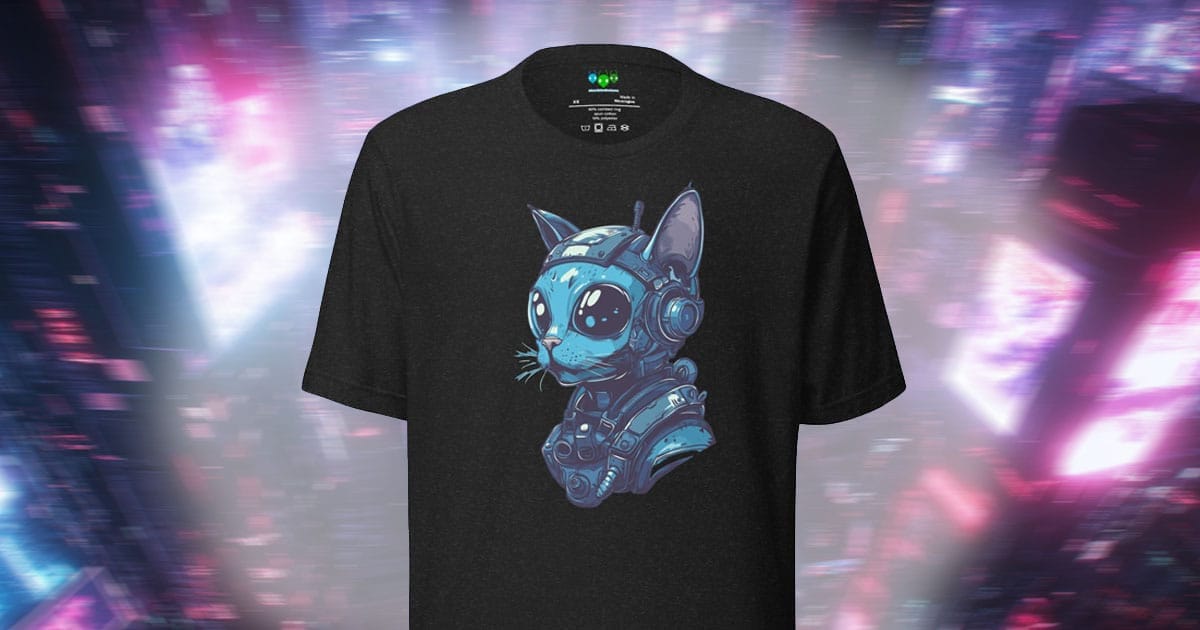Neuromancer Turns 41: How Cyberpunk Was Born
Explore how William Gibson’s 1984 novel "Neuromancer" launched the cyberpunk genre and introduced the world to cyberspace, forever changing science fiction and digital culture.

This Week in Classic Science Fiction -The Birth of Cyberpunk and the Digital Frontier
Forty-one years ago this week, William Gibson's "Neuromancer" arrived in bookstores and changed the direction of science fiction. Published on July 1, 1984, by Ace Books, the novel introduced readers to a world of artificial intelligence, global networks, and hackers navigating a virtual frontier known as cyberspace.
The story follows Case, a broken-down data thief who is hired for one last job. What begins as a shadowy assignment quickly unfolds into a mission that crosses the boundaries between man and machine, mind and code. Gibson's vision was cold and sleek, grounded in real-world tech developments and dressed in the language of noir.
"Neuromancer" went on to win the Hugo, Nebula, and Philip K. Dick Awards. It also launched the cyberpunk genre into mainstream science fiction. More than that, it predicted a future dominated by corporate power, digital landscapes, and questions about what it means to be human.
Today, with a television adaptation underway and tech giants wrestling with artificial intelligence, Gibson's future feels more relevant than ever. This week, we remember the book that made readers jump in for the first time and never look at the screen the same way again.
Sponsored By: Vex 9 the Cyborg Cat

Part feline, part machine, all attitude. The Vex‑9 Cyborg Cat is your perfect companion for prowling the neon-lit edges of the future. Soft, sleek, and sharp as a data spike, this tee belongs in every sci-fi rebel's rotation.
Where Cyberpunk Was Born and the Future Began
When William Gibson's "Neuromancer" landed in 1984, few could have predicted the seismic impact it would have on science fiction. At first glance, it looked like a gritty paperback novel with a confusing plot and streetwise jargon. Yet this story about a washed-up hacker named Case and his plunge into a high-tech underworld launched an entire movement.
"Neuromancer" did more than invent the cyberpunk genre. It gave a name to a vision of the future that felt at once alien and inevitable. Gibson coined the word "cyberspace" to describe a virtual reality data network where information became landscape.
From Typewriter to Cyberspace
The term was new, but the concept resonated immediately with readers living through the dawn of the digital age. In the early 1980s, personal computers were making their way into American homes, and people were beginning to understand that information could be both valuable and dangerous. Gibson captured this shift with a story that felt like prophecy.
Cyberpunk, as a movement, rejected the clean optimism of earlier science fiction. This was not the shining white corridors of a moon base or the idealism of a starship crew. It was rain-soaked alleys lit by neon signs. It was hackers, mercenaries, and corporations whose power dwarfed that of any government.
Case and Molly: Survivors in the Sprawl
In "Neuromancer," the future is not a dream. It is a place where power flows through hidden systems and where identity is as unstable as code. The world Gibson built is steeped in what might be called techno-noir. His characters navigate a reality shaped by invasive technology and global corporate interests.
Case is not a hero in the traditional sense. He is a broken man, numbed by drugs and betrayal. He is drawn into a job he does not fully understand. His companion, Molly, is a street samurai with mirrored lenses for eyes and razors beneath her fingernails.
They are survivors, not saviors. And that is the point. What made Gibson's work remarkable was how vividly it anticipated the world to come. He wrote of virtual worlds long before the Internet became a household word.
A Vision That Caught Fire
He imagined digital warfare, AI evolution, and the blending of man with machine. His cyberspace was not just a setting. It was an idea that gave form to the growing unease about technology's reach and direction. This vision caught on because it felt real.
In fact, many readers assumed that Gibson had deep knowledge of computer systems. He did not. He wrote "Neuromancer" on a manual typewriter, crafting his world from a mix of research and instinct. What he understood better than most was how technology would change human life.
Cyberpunk Spreads Beyond the Page
He saw that power would migrate into code. He saw that control over information would mean control over society. The influence of "Neuromancer" spread quickly. It inspired a wave of cyberpunk novels, including works by Bruce Sterling, Pat Cadigan, and Rudy Rucker.
Its themes bled into film, music, and video games. You can see its fingerprints on "The Matrix" and in the design of cyberpunk-themed role-playing games. It also shows up in the visual language of countless dystopian futures. More importantly, Gibson's ideas entered the real world.
The Fiction That Became Framework
Terms like cyberspace became part of the public conversation. Policymakers, journalists, and engineers began using the language he invented to describe the world they were building. In a curious twist, fiction became the framework. The future began to look like a Gibson novel, not because he predicted it, but because people started using his map.
Cyberpunk as a genre peaked in the late 1980s and early 1990s. But its DNA lives on. Today, with artificial intelligence reshaping work and social media rewiring human interaction, the questions Gibson raised remain vital. Who controls the systems that run our lives?
Neuromancer in the Present Day
How much of ourselves do we give away when we log in? What happens when the virtual becomes more real than the physical? The announcement of a new television adaptation of "Neuromancer" by Apple TV has brought renewed attention to these questions. For some fans, there is excitement.
For others, caution. The book's legacy is heavy, and its atmosphere difficult to capture. But the return of Gibson's world to the screen is a reminder of just how enduring his creation has been. The birth of cyberpunk was not just the start of a new genre.
The Signal Still Echoes
It was a turning point in how science fiction approached the future. "Neuromancer" did not offer escape. It offered confrontation. It asked readers to consider the cost of progress and to see beauty and horror in the same frame.
As we mark another year since its publication, "Neuromancer" remains a landmark. It changed how we talk about technology and how we imagine what lies ahead. In the story of science fiction, it is the moment the wires began to hum and the screen began to glow. It was the sound of the future coming online.
"Neuromancer" Trivia
- William Gibson coined the term "cyberspace" in his 1982 short story "Burning Chrome," but popularized it in "Neuromancer" two years later.
- Gibson typed the entire manuscript of "Neuromancer" on a manual typewriter, despite having little real-world experience with computers.
- Some early editions of "Neuromancer" were printed with a misspelling of the title as "Neuroancer," making them rare collector's items today.

